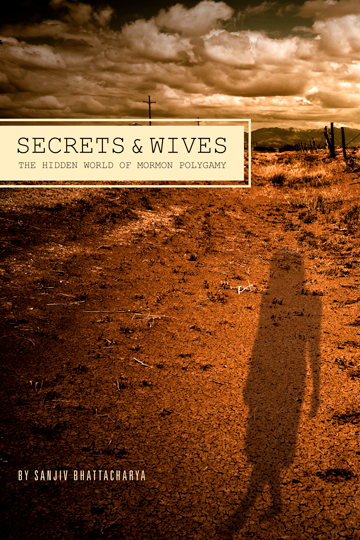By Jennifer Zimmerman
 The book Secrets & Wives: The Hidden World of Mormon Polygamy, by Sanjiv Bhattacharya, slowly reveals the secrets of a world that not many have had access to. Bhattacharya, a journalist and an atheist, travels through parts of Utah and Texas and befriends and interviews people from many different fundamentalist Mormon sects that practice polygamy.
The book Secrets & Wives: The Hidden World of Mormon Polygamy, by Sanjiv Bhattacharya, slowly reveals the secrets of a world that not many have had access to. Bhattacharya, a journalist and an atheist, travels through parts of Utah and Texas and befriends and interviews people from many different fundamentalist Mormon sects that practice polygamy.
In the preface of the book Bhattacharya tells us why he chose to say “Mormon polygamy” in the title and throughout portions of the book instead of “fundamentalist Mormon polygamy”. He explains, “The Church of Jesus Christ of Latter-day Saints (LDS Church) insists there’s no such thing as ‘Mormon polygamy’ because it defines ‘Mormon’ as relating strictly to the membership of ‘the Church’, and there aren’t any polygamists in the Church. But I’m not defining ‘Mormon’ that way – I see it as a broader term, referring to the belief, or those who believe, in the divinity of the core Mormon scriptures” (page ix). I disagreed with Bhattacharya on this point, and I found it confusing to decipher which type of Mormon he was talking about. He would distinguish at times by calling LDS Mormons, “Vanilla Mormons” and referring to some of the sects he encountered as “fundamentalist Mormons.” He was not always consistent, which could lead to confusion on the part of the reader.
.Bhattacharya begins his book by telling the fascinating history of the LDS church and its founders through his skeptical atheist eyes. He then sets out on a journey to interview as many people as he can from different fundamentalist Mormon poly-gamist groups. Bhattacharya’s retelling of the Mormon story, both the “vanilla” and “fundamentalist” varieties, is often humorous, but without any hint of ridicule for the people he interviews, many of whom he has friendly feelings or even great concern towards. Bhattacharya expertly questions his subjects until their talking points wear thin and their beliefs are revealed to have no basis in actual evidence. Bhattacharya comes across many interesting stories of polygamy, and even encounters people who are trying to leave, or who have left their groups. The interviews he conducts with these leaving or former members give his account a richer layer of realism and provide fuller explanation of the church for the reader. Bhattacharya spends portions of his book telling his own story, but only enough to explain to the reader where his interest came from and why he set out to write this book.
Bhattacharya describes the groups he encounters and the people who are members of those groups in realistic detail. He paints pictures in our minds of families who live polygamous lives, who truly believe in the words of the leaders of their cults, and who feel that outsiders are a threat to that belief system. These belief systems are quite alien to most of us, yet their followers are no less faithful or devout than any other religion we might be aware of in our own communities. Bhattacharya shows us, through the pages of Secrets & Wives, just how many ways one set of scriptures (in this case, the Mormon scriptures) can be twisted to suit the whims of a group’s leaders.
Bhattacharya’s telling of his story of traveling to polygamist cults and interviewing the members was an interesting and entertaining read. Secrets & Wives would be especially intriguing for those who are familiar with life within a cult, or interested in the culture of polygamy.

